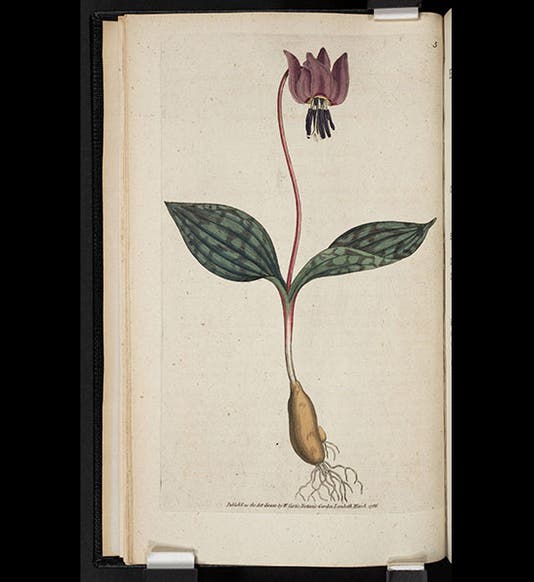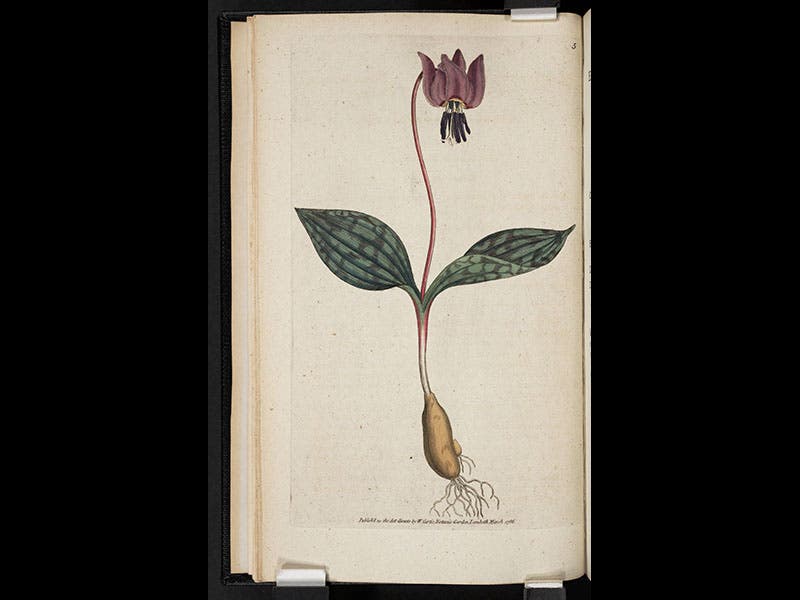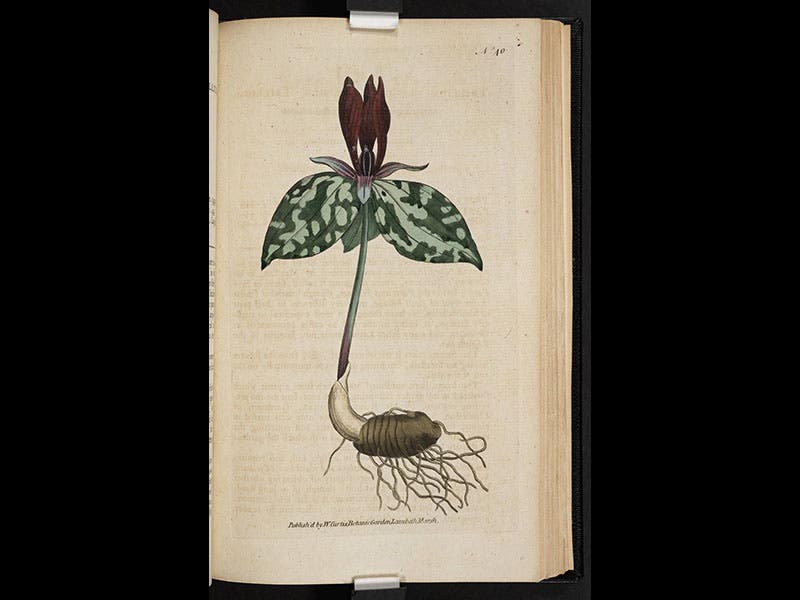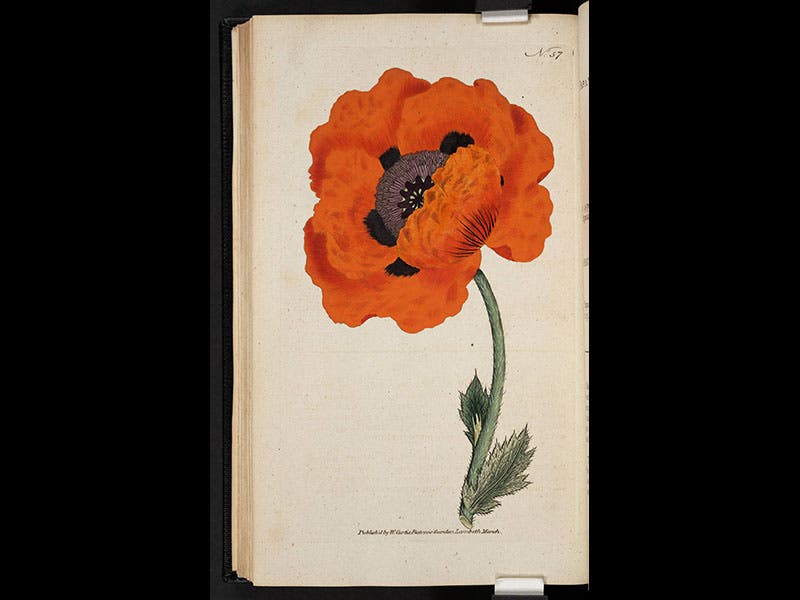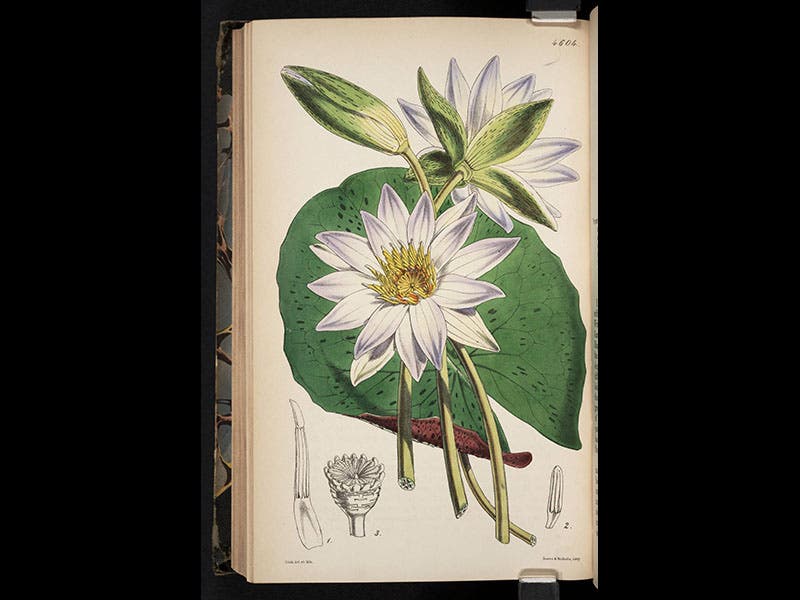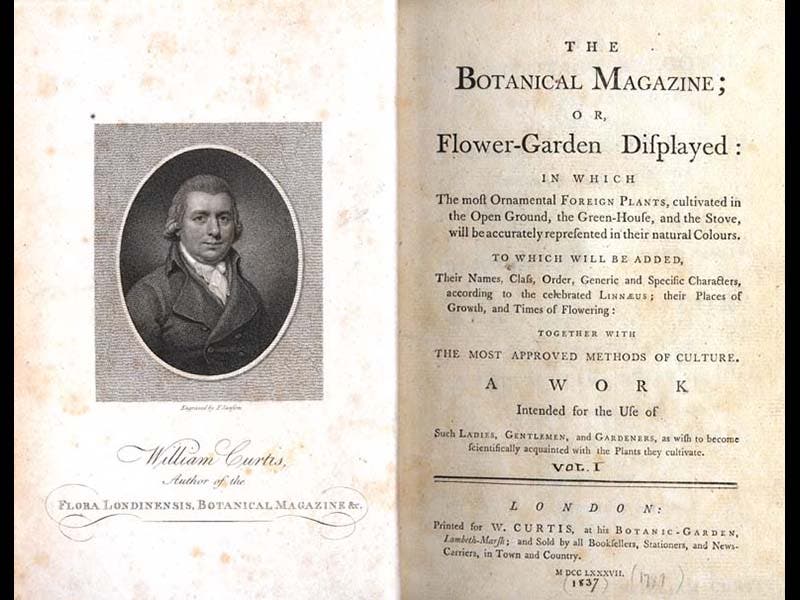Scientist of the Day - William Curtis
The first issue of The Botanical Magazine appeared on newsstands on Feb. 1, 1787. The magazine was the creation of William Curtis, a London gardener who had achieved some fame with his folio-sized Flora Londinensis (1775-98), but little financial reward. The Botanical Magazine was a much more modest affair, with each issue consisting of three hand-colored plates and as many pages of explanatory letterpress. It cost one shilling and sold very well. Curtis hired many of the same artists he had used for his Flora Londinensis to illustrate the magazine--men such as James Sowerby and Sydenham Edwards. When Curtis died in 1799, the publication was taken over by John Sims, who renamed it Curtis's Botanical Magazine. In 1826, William Jackson Hooker took over the editorship, and he hired the artist Walter Hood Fitch, who would supply illustrations for more than forty years.
Editors came and went, as did illustrators, but Curtis's Botanical Magazine had found its niche and continued to meet the expectations of its audience, which had been described on the title page of the very first volume back in 1787: "intended for the use of such Ladies, Gentlemen, and Gardeners, as wish to become scientifically acquainted with the Plants they cultivate.” Except for one brief period in the 1980s, when the name was unwisely changed to The Kew Magazine, it has continued in print right up to the present day. The library has a nearly complete run in its serial collection.
The illustrations above, taken from the magazine, show: a dog’s tooth lily, a trilium, and a poppy, all from the first volume, and a water lily, from 1851. The fifth image shows the title page of the first volume, with a frontispiece portrait of William Curtis. We featured the 1851 volume in our 2009 exhibition, The Grandeur of Life, since it included a flower brought back from South America by Charles Darwin. We ended up not displaying that plant, a Chilean barberry, in the exhibit, so we show it here (sixth image).
Dr. William B. Ashworth, Jr., Consultant for the History of Science, Linda Hall Library and Associate Professor, Department of History, University of Missouri-Kansas City. Comments or corrections are welcome; please direct to ashworthw@umkc.edu.

